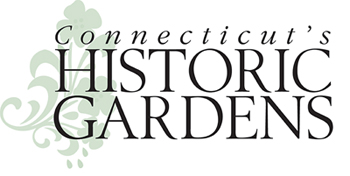by Susan Robinson, Osborne Homestead Museum
This holiday season is the bee’s knees at the Osborne Homestead Museum in Derby, Connecticut! Once the home of business woman, dairy breeder, and philanthropist Frances Osborne Kellogg, the museum is now owned and operated by the State of Connecticut’s Department of Energy & Environmental Protection. For more than thirty years, garden clubs and organizations have decorated the museum. This year’s holiday theme honors the pollinators, the animals who are essential for the survival of humans, wildlife, and the earth. Each room has bee-utiful decorations representing peculiar pollinators like bats and lemurs to familiar ones like bees and butterflies.
Derby Garden Society decorated the Studio with bees, the most familiar and dominant insect pollinators. Their garlands are decorated with bee lights and dried marigolds, daisies, zinnias, hydrangea, and celosia. They also adorned the room with honey vases, the famous honey lover Winnie the Pooh, real hives, and handmade bee skeps!

Long Hill Garden Club decorated the Milk Room, Porch, and Ice Box Pantry with unfamiliar pollinators, lizards and reptiles! No one thinks of lizards as pollinators but scientists have proven that they are the only pollinators of certain plants. The club created a giant gecko which greets you at the porch! Geckos pollinate the New Zealand Christmas tree and New Zealand flax which have red flowers that the garden club used throughout the room.

Women Redefining Retirement-Milford decorated the Kitchen & Butler’s Pantry with another uncommon pollinator, the rodent. The rooms have over 50 mice (some of them made by the organization), three squirrels, two chipmunks, two woodchucks, a rabbit, and a rat! Pollinating rodents are attracted to flowers that have a very strong fragrance and produce an abundance of nectar. For instance, the South African spiny mouse pollinates the mountain-rose sugarbush which has a strong musty or yeasty odor and produces plenty of sugar-rich, syrupy nectar!

Olde Ripton Garden Club of Shelton created a dream of lemurs and the jungle on Christmas Eve in the Childhood Bedroom and Bathroom! Found only in Madagascar and the neighboring Comoro Islands, lemurs are the world’s largest pollinator. The rooms have several lemurs, including the red ruffed lemurs, pollinators of the traveler’s palm. The bird of paradise plant which is closely related to the traveler’s palm, orchids, and poinsettias, the national emblem of Madagascar, decorate the rooms.

Garden Club of Orange decorated another bedroom with the major pollinator of wildflowers, the hummingbirds. They handmade the ruby-throated hummingbirds and flowers (morning glory, trumpet honeysuckle, trumpet creeper, hydrangeas, foxglove) adorning the rooms.

Ye Old Kellogg Garden Club decorated the dressing room and front bedroom with a misunderstood pollinator, the bat! They are important pollinators in tropical and desert climates. The dressing room highlights tropical bat pollination with the Black Calabash Tree (made by the club), lush green foliage, orchids, bromeliads, and lichen. The front bedroom represents desert bat pollination with décor featuring Saguaro and Agave cacti and succulent plants.

Jen Plasky of the American Institute of Floral Design decorated the library with one of the earliest pollinators, the beetles! They pollinated ancient plant species such as the magnolia and spicebush. She adorned the mantel with magnolia blossoms, small red berries of the spicebush, and twigs representing the beetles’ antennas.

Garden Club of Woodbridge decorated the Living Room and Solarium with butterflies! The swirling pattern of the monarchs on the live tree (donated by Jones Family Farms in Shelton) represents their remarkable migration from northern US and Canada to Mexico. The club made gilded milkweed pod topiaries for the mantel and in dried floral arrangements.

In the dining room, the pollinators are up to their usual antics! Naugatuck Garden Club decorated this room with ants, pollinators of sedum, spurge, and knotweed. On the hutch, ants are carrying pollen from orchids and loading them onto Santa Ant’s Pollinator Express!

Nine clubs decorated the museum with pollinating animals who provide a service that all of us depend on. Not only is it fun to visit Connecticut’s Historic Gardens during their peak blooming times in the spring and summer, it’s also worthwhile to visit these historic places during the fall and winter to learn about history, nature, and the arts.

Leave a Reply